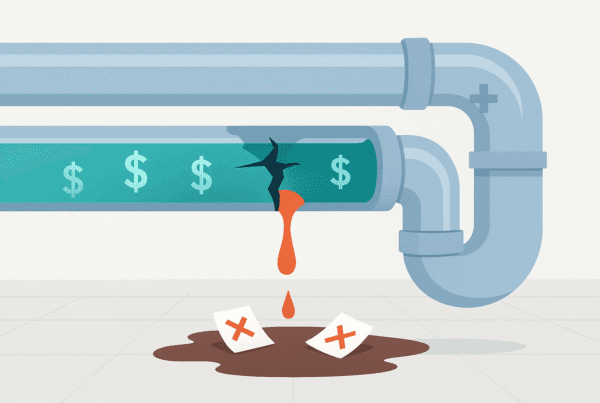The market for Interventional Pain practices in Columbus is active. Private equity and strategic buyers are looking for quality practices, creating a significant opportunity for owners considering their next move. Selling your practice is more than a transaction. It’s a major professional and financial milestone that requires a strategic approach. Proper preparation before selling can significantly increase your final practice value. Maximizing that opportunity comes down to timing, preparation, and expert guidance through a complex process.
A Look at the Columbus Market
Right now, the conditions for selling an Interventional Pain practice in the Columbus area are strong. This is not a coincidence. A combination of national trends and local factors makes this an opportune time to explore your options.
High Buyer Demand
Large groups and private equity firms are actively acquiring practices in high-growth specialties like interventional pain management. They are looking for well-run, profitable practices to build regional and national platforms. This creates a competitive environment, which can drive up valuations for prepared sellers. Your practice may be worth more than you think, simply due to this high demand from sophisticated buyers.
The Columbus Advantage
Columbus is a growing metropolitan area with a stable economy and a diverse patient population. This makes it an attractive location for healthcare investors looking for long-term stability and growth. For a practice owner, this means your potential buyer pool is not just local. It includes well-capitalized national players seeking a foothold in a key Ohio market.
Key Considerations Before You Sell
A strong market is only an advantage if you are ready for it. Many owners think about selling for a few years, but the real work starts long before you go to market. Buyers do not pay for potential. They pay for what is proven. Organizing your practice for a sale is the single best way to maximize its value. This means cleaning up your financial records, ensuring all legal documents are in order, and resolving any outstanding issues. For a pain practice in Ohio, this also means having a clear understanding of the Ohio-specific licensing requirements through the Medical Board and Board of Pharmacy, as this will be a key part of the buyer’s transition plan.
Market Activity and What It Means for You
The healthcare landscape is changing. Independent practices face growing administrative burdens and reimbursement challenges. This has fueled a wave of acquisitions by larger, better-capitalized groups. Here is what you need to know.
-
Private Equity is a Major Player. PE firms see the value in interventional pain. They are not just buying practices; they are building platforms. This means they are often willing to pay a premium for a practice that can serve as a strategic base in a key market like Columbus.
-
Partnership is the New Exit. Many physicians worry about losing control. But selling does not have to mean walking away. Many deals are structured as partnerships or minority recapitalizations. These allow you to take some chips off the table while retaining clinical autonomy and a stake in the future growth of the larger enterprise. Control is not binary.
-
Timing the Market Matters. This high level of buyer interest will not last forever. Economic conditions and industry trends shift. Understanding the current window of opportunity is important for deciding when to make your move.
Navigating the Sale Process
Selling a practice is a structured process, not a single event. It begins with confidential preparation and valuation. Then, we identify and approach a curated list of potential buyers who are the right fit for your goals. We do not “list” your practice; we run a competitive process designed to generate multiple offers.
Negotiations follow, covering not just price but also the terms of your future role, if any. The most critical stage is often due diligence. This is where the buyer examines every aspect of your practice, from financials to compliance. Many deals fail here because of poor preparation. A well-managed process anticipates buyer questions and prevents surprises, ensuring a smooth path to closing the deal.
How Your Practice is Valued
Your practice is not worth 1x revenue. That “rule of thumb” is outdated and ignores what sophisticated buyers actually care about: profitability and future growth. The core metric is Adjusted EBITDA (Earnings Before Interest, Taxes, Depreciation, and Amortization). We start with your net income and add back owner-specific expenses, like an above-market salary or personal car lease, to find the true cash flow of the business.
This Adjusted EBITDA is then multiplied by a number, the “multiple,” to determine the Enterprise Value. That multiple is not static. It changes based on several factors.
| Factor that Increases Value | Factor that Decreases Value |
|---|---|
| Multiple providers, not just the owner | High reliance on a single owner |
| Strong, documented growth history | Flat or declining revenue |
| Diverse, in-network payer mix | High concentration of out-of-network |
| Over $1M+ in Adjusted EBITDA | Less than $500k in Adjusted EBITDA |
Buyers do not just buy numbers. They buy a story. Framing your practice’s strengths and growth potential is key to commanding a premium valuation.
Life After the Sale
The deal is not done when the papers are signed. A successful transition protects your legacy, your staff, and your patients. This often involves the selling physician staying on for a period, either in a full clinical capacity or a leadership role, to ensure a smooth handover. Planning for this transition is a key part of the negotiation.
Equally important are the financial and tax implications. The structure of your sale has a massive impact on your after-tax proceeds. Getting expert advice on how to structure the deal can save you a significant amount of money. Thinking through these post-sale details ahead of time ensures you achieve not just a great price, but a great outcome for your personal and professional goals.
Not sure if selling is right for you?
Frequently Asked Questions
What is the current market environment for selling an Interventional Pain practice in Columbus, OH?
The market for Interventional Pain practices in Columbus is active and favorable. There is high demand from private equity and strategic buyers looking for quality, profitable practices to build regional and national platforms, creating a competitive environment and potentially higher valuations for prepared sellers.
What are the key factors that can increase the value of my Interventional Pain practice before selling?
To increase your practice’s value, you should properly prepare by organizing financial records, resolving legal and compliance issues, and ensuring Ohio-specific licensing requirements are met. Buyers value profitability and growth, so demonstrating a strong market position with multiple providers, documented growth, and a diverse payer mix can significantly enhance valuation.
How is the value of an Interventional Pain practice determined during the sale?
Practice value is primarily based on Adjusted EBITDA (Earnings Before Interest, Taxes, Depreciation, and Amortization), which reflects the true cash flow by adding back owner-specific expenses to net income. This figure is then multiplied by a variable ‘multiple’ which depends on factors like provider diversity, growth history, payer mix, and adjusted EBITDA size.
Can I sell my practice while still retaining some control or involvement?
Yes, selling the practice does not have to mean a complete exit. Many deals are structured as partnerships or minority recapitalizations, allowing physicians to take some financial gains while retaining clinical autonomy and a stake in the new entity’s future growth.
What should I expect during the sales process and after selling my practice?
The sales process involves confidential preparation, valuation, identifying suitable buyers, and a competitive bidding process. Due diligence is critical and requires thorough preparation to avoid deal failures. After sale, transitioning smoothly by possibly staying on in a clinical or leadership role and carefully planning financial and tax implications will help protect your legacy and maximize after-tax proceeds.



